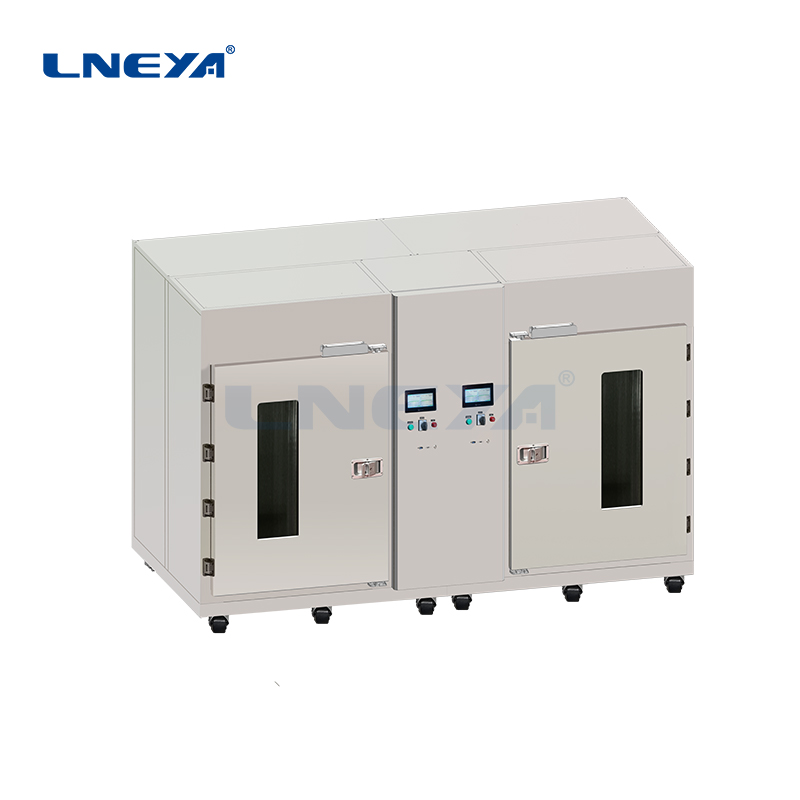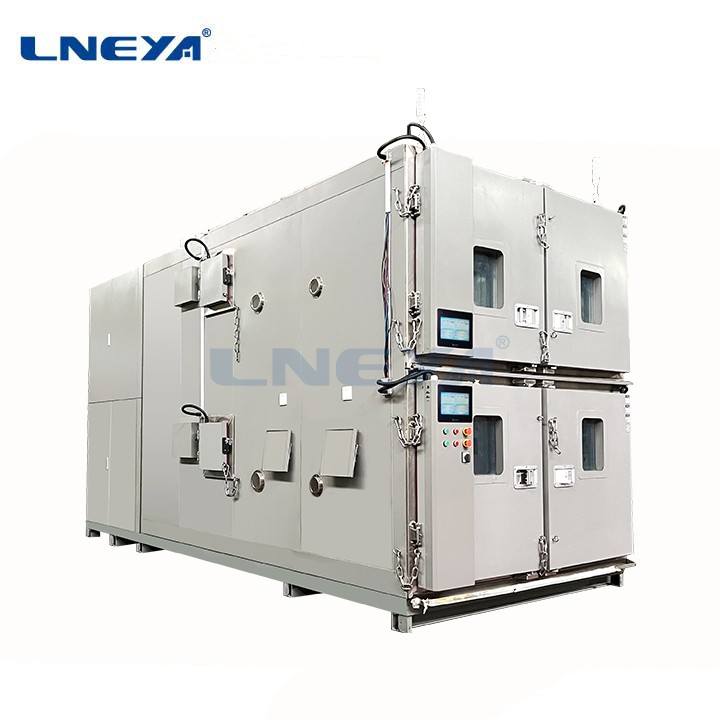Thermal Shock Test: What It Is and How to Do It
Thermal shock testing is a type of environmental stress testing. It testing checks how strong and reliable a product is under fast, extreme temperature changes.It simulates real-world conditions where temperatures shift suddenly. It is commonly performed on products such as semiconductor chips, EV batteries, electronic control units (ECUs), and optical instruments that are frequently exposed to thermal cycling in actual use.
Through this article, you will understand the reasons, steps, and precautions for thermal shock testing. Provide a reference for you to choose a thermal shock chamber.
Thermal shock testing is a type of environmental stress testing. It testing checks how strong and reliable a product is under fast, extreme temperature changes.It simulates real-world conditions where temperatures shift suddenly. It is commonly performed on products such as semiconductor chips, EV batteries, electronic control units (ECUs), and optical instruments that are frequently exposed to thermal cycling in actual use.
Related: EV Battery Thermal Testing: What It Is and Why It Matters
Why is thermal shock testing required?
Most materials and parts will experience various temperature changes during their life cycle. But they are not inherently designed to withstand such changes from the outset. For industries with extremely high reliability requirements, such as aviation, automobiles, electronics, communications, and medical care, drastic changes in temperature may not only cause structural damage to equipment but also induce electronic failures, sealing failures, and even paralysis of the entire machine.
You can imagine such a scene. A car suddenly starts after being stationary outdoors for several hours in winter, and the temperature in the engine compartment rises rapidly within a few minutes. Or a communication satellite is launched from the ground at normal temperature and is instantly exposed to a high altitude of several hundred degrees below zero after taking off. These scenarios expose equipment to thermal shock conditions in a very short period of time.
So, how do these products respond under such thermal shock conditions? To check how materials handle heat and cold, test them in extreme temperatures during early product development. Thermal shock tests help you find risks before real-world use.
How to do thermal shock tests?
The thermal shock test will be completed with the help of a thermal shock chamber. A thermal shock chamber is a specialized temperature control device capable of rapidly alternating between high and low temperatures within seconds, simulating harsh environmental shifts. The thermal shock chamber generally has two or three independent temperature zones, divided into high temperature, low temperature, and test zones.
According to the test needs, the test program can be set on the touch screen. The test program can preset temperature points, dwell time, number of hot and cold switching, and related conditions, and support automatic execution. At the beginning of the test, the sample will be placed in the test area for pre-balancing to reach a certain initial temperature. After the equipment is started, it will run according to the settings, and the sample will be quickly moved between the high and low temperature zones through the transmission device.

Precautions for thermal shock testing
The thermal shock test has strict requirements on the equipment. In order to provide an instantaneous drastic temperature difference, the thermal shock chamber is required to have a wide temperature range and the ability to quickly switch temperature zones. The second is temperature uniformity.
The temperature in each part of the box should be kept as consistent as possible to avoid sample damage and test data errors. Finally, safety. Especially when testing modules and battery packs, the test box must have explosion-proof and exhaust functions to prevent thermal runaway.
1. Calibrate the equipment in advance to ensure that the temperature control accuracy meets the standard.
2. Leave redundancy for the test equipment to avoid affecting air circulation and temperature uniformity.
3. Clean the equipment and samples before testing to avoid impurities affecting the safety of the test.
4. Check the temperature control system and alarm records regularly when the test box is in operation.
Common application of thermal shock testing
Thermal shock testing is widely used across industries such as aerospace, automotive, military electronics, medical equipment, and industrial automation, particularly for components that are sensitive to temperature fluctuations or require long-term reliability.
• Battery cells, battery modules, battery packs
• Electronic control units (ECUs), sensors, and relays
• Headlight housings, on-board displays
• Chips, PCBs, welding components, and packaging materials
• Navigation systems, aircraft control units, and cabin structures
• Surgical robot modules, cold chain transport sensors
• Lens modules, fiber optic connectors, laser modules
• Rubber seals, plastic housings, and composite insulation materials
• Military communication equipment, field surveillance cameras, and outdoor lighting systems
• Industrial controllers, robot motors, wind/photovoltaic inverter components
• And more
Choose the right test solution
Thermal shock testing helps find risks in harsh conditions during product development. It’s useful for improving materials and making better designs.
Good equipment gives stable, safe, and accurate temperature control for testing. LNEYA has 15 years of experience in thermal control solutions. We offer both standard and custom thermal shock chambers. Our systems switch fast and hold steady temperatures, so your tests run quicker and more smoothly.
Need reliable thermal shock testing for your product? Talk to our team and get a test plan made for you.
Related chambers
CONTATTO
TEL:
EMAIL:
WeChat & WhatsApp:

Wechat QR

Hai domande o hai bisogno di un preventivo? Compila il modulo sottostante e il nostro team ti risponderà entro 24 ore.
 Refrigeratori industriali LNEYA Produttore Fornitore
Refrigeratori industriali LNEYA Produttore Fornitore














